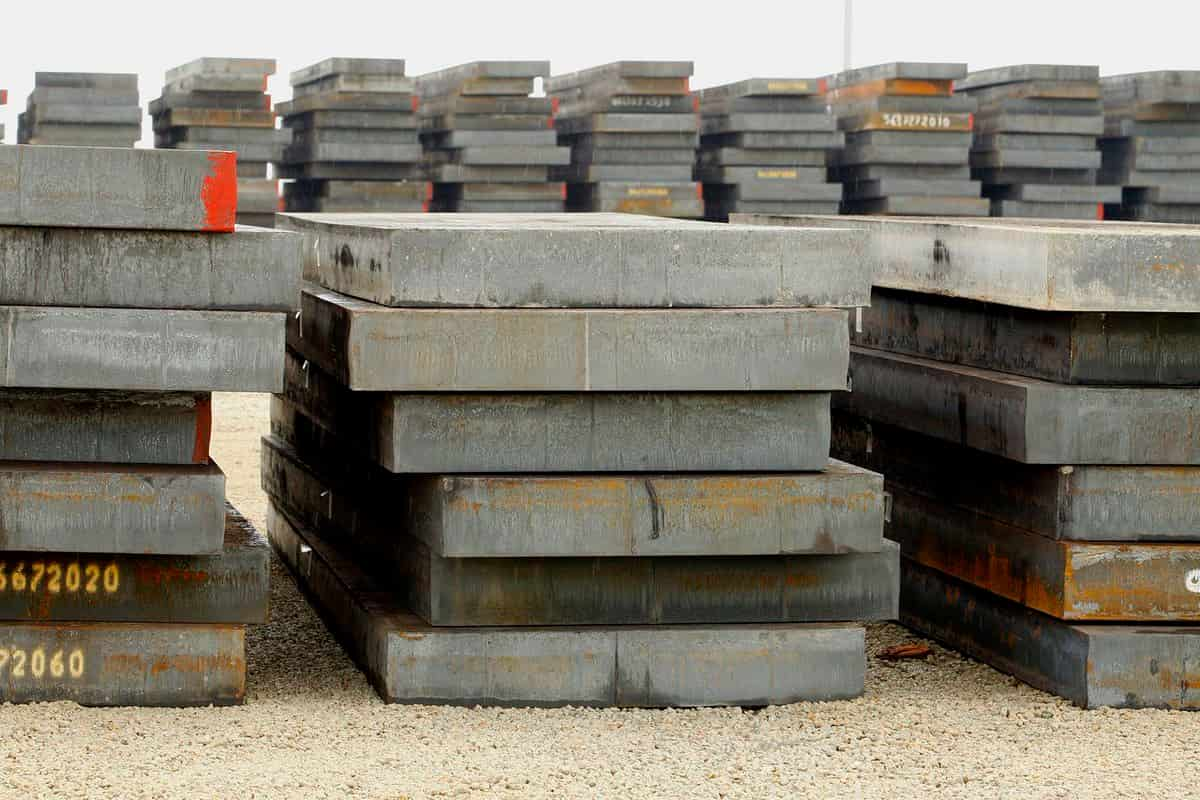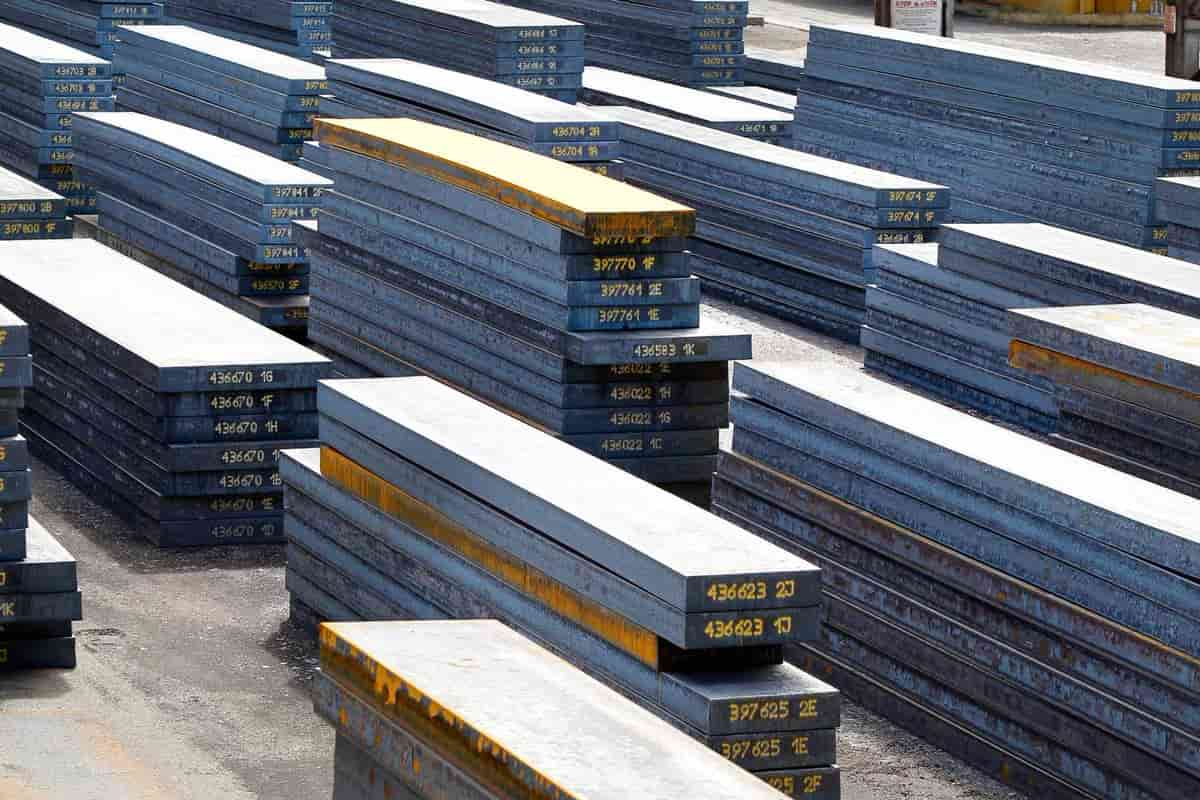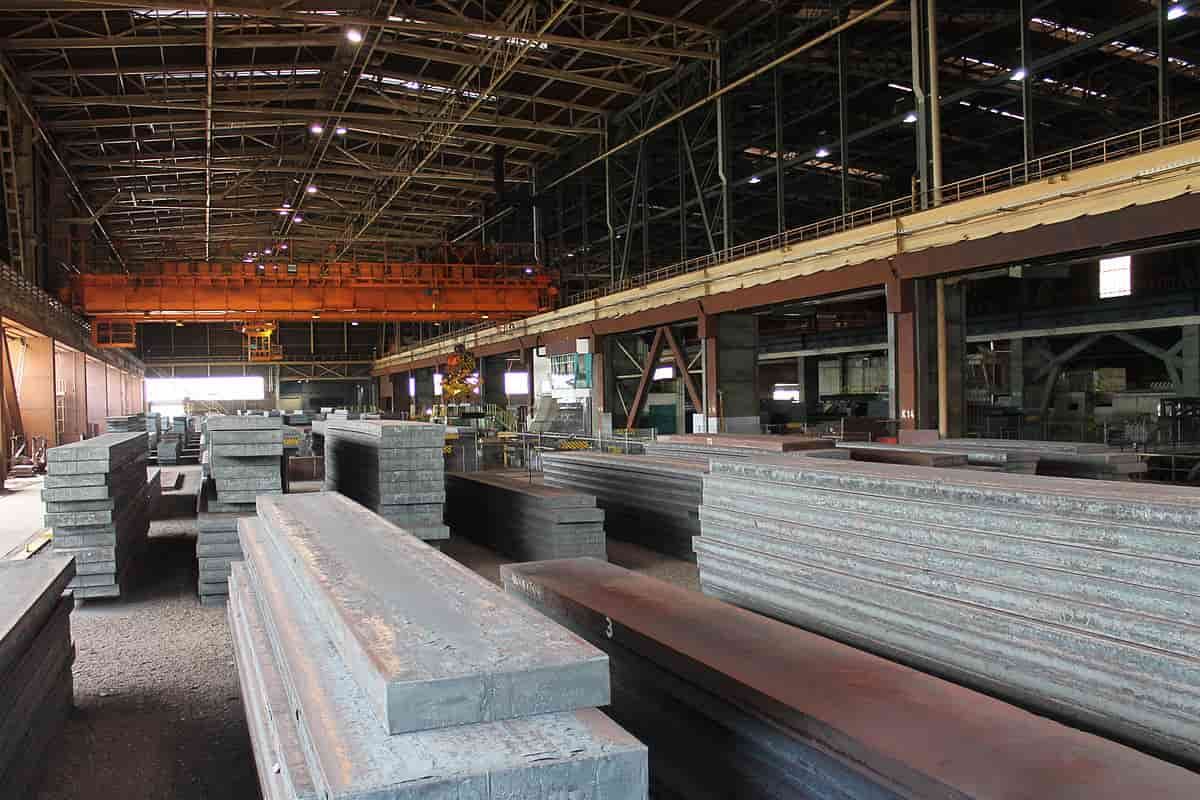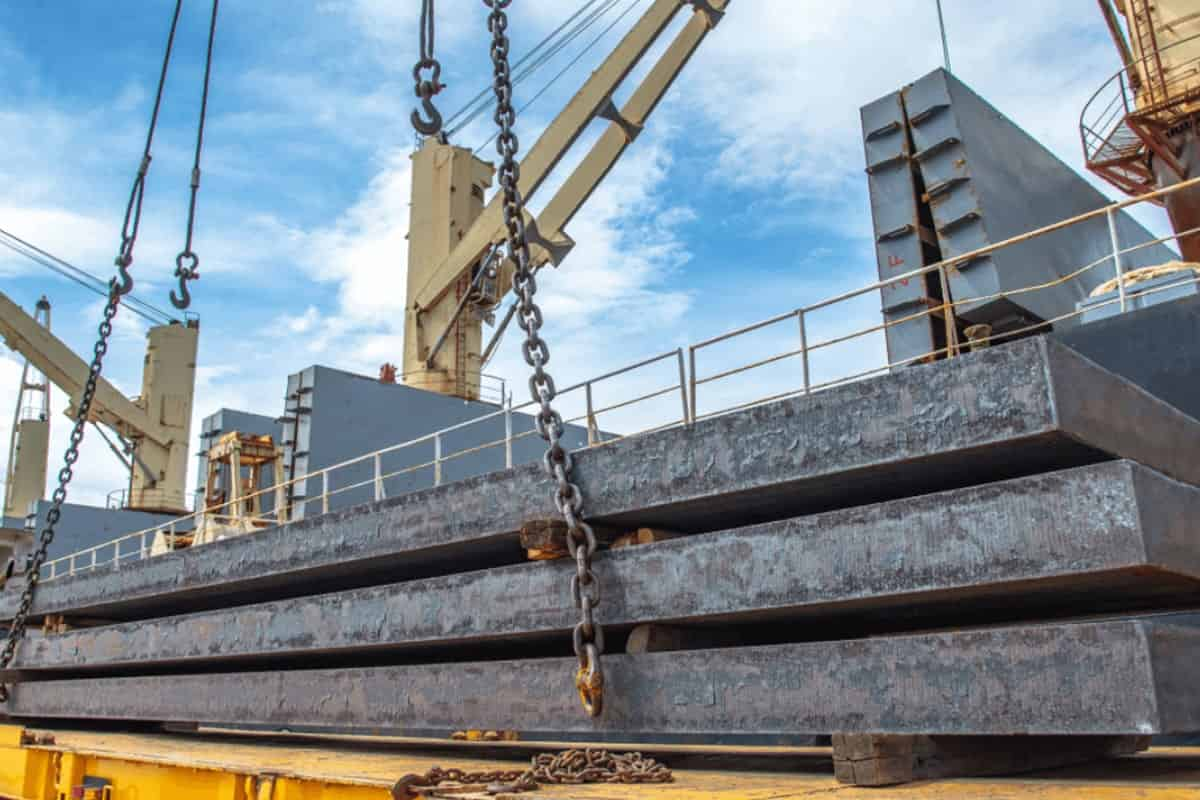This steel is semi-finished and medium and can be obtained by the cumulative rolling process or continuous casting process. The cross section is not square, but rectangular, and it is used as the raw material for the production of flat rolled products including coils and hot rolled sheets.
In this paper, we introduce the components, their production methods, applications and some of the key points related to Magauf slab. Slabs as rectangular steel products with width from 650mm to max 2000mm,
Thickness from 200 to 250 mm and variable length from 4 to 12 meters to produce various steel products such as sheets, sheets, coils, as well as heavy machinery industry.
What is a rock? The slab is a semi-finished steel product with rectangular cross-section that is transformed into the final product (steel plate) through one or more processing steps in rolling mill and sheet production. In Iran, this product is called Tartal, which is pronounced in English.

The slab is a semi-finished steel in fabrication of plates and plates made of steel. The price is very important considering the quality of production in Iran. Most slabs are made of carbon steel, but stainless steel slabs are also available.
Iron, chromium, copper, manganese, nickel, silicon, nickel, molybdenum, and other alloys make up this product. The end of the board is usually engraved with standard codes and its parameters are described.
Some criteria are the standard Slabs table of rectangular steel products with widths between ۶۵۰mm and ۲۰۰۰mm max, thickness from 200 to ۲۵۰mm and variable length from 4 to 12 meters.
The production size of this product depends on the application, the maximum production speed of this product is 230 mm thick, 1250 mm wide (1 meter and 25 cm) and 12 meters long. The market is very limited and approximately 20 million tons of dahl are sold worldwide each year.
Bellet, Bloom and Del are brands of 22 steel that are used to produce different kinds of profiles and steel. Slabs are used in manufacturing various kinds of flat steel products such as sheets, sheets, coils, as well as in heavy machinery industry.

According to the standard size, the thickness of this steel plate is very low, so there may be a problem in cutting it, so it must be cut with high capacity equipment.
Although used for the production of steel products, the methods used after obtaining molten steel are almost identical, there are three main methods for the production of steel parts:
1. Blast furnace method, explosion furnace method, blast furnace method, traditional method of explosion furnace, are the traditional method of slab production by indirect regeneration method.
Given that Iran possesses high quality coal resources, this approach is feasible. First, iron ore is placed in the blast furnace, along with lime and coke to extract pig iron (hot metal). To remove impurities from molten steel obtained from pig steel, raw steel is obtained by removing carbon and adding oxygen.
After the product is removed from the mold and cooled using a cold water jet, the melting is injected into the mold and converted into a frozen ingot. Finally, the optimum slab length can be obtained by different rates.
2. The electric furnace is the two methods of producing steel, using electric furnaces and scrap metal smelting, which includes pouring iron baskets into the furnace.

In view of the shortage of scrap resources in the world and the constant rising prices in recent years, fueling iron is also being melted in the furnace with scrap metal used in this method. So while smelling the scrap metal, it added spongy iron and slag, like coca,
bentonite, lime and other additives to melt from the upper part of the furnace after sampling by adding oxygen, impurities, especially carbon in the oxidized melting. Finally, it is made by the homogenization of molten steel.
In the casting unit, the molten steel is cast into a hydrothermal copper mold, which is then converted into a frozen steel ingot with cold water spray.
3. Induction furnace methods, due to the use of electricity, electrodes and additives, are costly, while these furnaces have two problems which prevent them from being used in production of steel in Iran.
The first is that induction furnaces do not control oxygen, which can lead to defecation in the product, because the oxidation of ferroalloys occurs due to dissolved oxygen in the melting process.
The second problem is induction furnace defopolymerization and desulfurization. In the world, though, they use the detonation furnace method to produce raw steel and slabs.
Dahl production plants in Iran are sold in steel products due to the special situation of the laboratory, in Ayrondhar Isfahan, Khuzestan Steel, Hormozgan Steel Company, Mobarak Steel Company of Isfahan and Chandolu Steel Factory, Hormozgan Steel Factories for manufacturing slabs.

The mills produce slabs between 180 and 300 mm thick and in lengths of 4, 6, 10 and 12. In recent years, this product has been manufactured according to international standards and exported to various countries in Asia and even Europe.
Conclusion
Our vision is to be the standard for customized products and quality services so that we can create a good brand image of our company in the national and international market with competitive price and cheap transportation services.
We are eager to do what we do and strive to meet the needs of our customers by providing quality products and services. And don’t hesitate to question our support team. For more information please visit our site.



